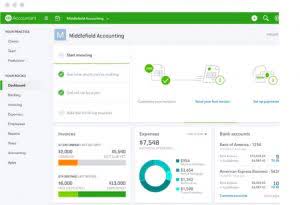
The other way of determining effectiveness is through retrospective testing. They examine whether a hedging instrument has been highly effective in periods in the past. Hedge accounting really aims to reduce the issues caused by fair value accounting. When you treat the fair value and the hedge as one value, it offsets the financial instrument’s movements. The effects of specific accounting policies and elections have historically not been relevant for most tax planning. However, the direct impact of particular accounting policies and elections on AFSI allows companies that could be subject to CAMT to reevaluate.
In a fair value hedge, the hedging instrument and the hedged item are both identified on the balance sheet at fair value, with changes in the fair value of both items recognized in the income statement. It is a collection of accounting guidelines that enable businesses to lessen the risks connected to financial instruments while delivering more accurate and transparent financial reporting. IFRS 9 does not permit voluntary dedesignation of a hedge accounting relationship that remains consistent with its risk management objectives.
Stocks Mentioned
This way, if the stock were to drop all the way to, say $50, you would still be able to sell your XYZ shares at $90. Using derivatives to hedge an investment enables precise calculations of risk, but it requires a measure of sophistication and often quite a bit of capital. Strategically diversifying a portfolio to reduce certain risks can also be considered a hedge, albeit a somewhat crude one.
Hedge funds plow cash into top tech stocks leading to record levels of crowding – Financial News
Hedge funds plow cash into top tech stocks leading to record levels of crowding.
Posted: Tue, 21 Nov 2023 13:51:17 GMT [source]
You never want to be caught in a situation where you are over-hedging because of missed forecasts. If you have any inkling that some portion of the €100 million of forecasted revenue isn’t likely to occur, you should only hedge the portion that is highly probable to occur. For this reason, many companies choose to layer on hedges over time.
What is hedging and how is it used?
Because hedge accounting is a special election, you can’t just verbally say you are applying it or imply that you have elected it just by having commercial risk. You must formally document this election at the onset of the hedging relationship. Commodity futures are like forward contracts, except they are traded on an exchange rather than over the counter and marked to market daily, causing cash collateral to change hands during the lifetime of the contract. IAS39 requires that all derivatives are marked-to-market with changes in the mark-to-market being taken to the profit and loss account. For many entities this would result in a significant amount of profit and loss volatility arising from the use of derivatives.

Unlike a cash flow hedge, which mitigates the risk of a variable asset, fair value hedges prevent you from taking losses on fixed-rate investments. When done appropriately and correctly, implementing what is hedge accounting hedging can lower the risks on many levels for a business. The areas such as the foreign currency exchanges, cash flows, investments, debt, and investment interest experience risks.
Cash Flow Hedge
To qualify for hedge accounting, the hedged item needs to be reliably measurable. Note that derivatives that are used as economic hedges but are not designated in qualifying hedging relationships require special consideration for financial reporting purposes. Finally, some derivatives are entered into for speculative purposes and are not part of a risk mitigation strategy. A very common occurrence of hedge accounting is when companies seek to hedge their foreign exchange risk.
- IAS39 requires that all derivatives are marked-to-market with changes in the mark-to-market being taken to the profit and loss account.
- A careful evaluation is needed when determining the implications between reporting in accordance with IFRS 9 versus US GAAP.
- By following the proper procedures for recording this accounting, companies can manage their risks effectively and provide more reliable and transparent financial reporting.
- Investors focusing on this area may be more concerned with moderate declines than with more severe ones.
- Additionally, similar adjustments for intangible drilling costs and depletion were considered for oil and gas companies but ultimately rejected.
- The borrower pays a fixed swap rate to the swap provider in exchange for a floating rate (i.e. 1-month LIBOR).
In general accounting, the derivative instruments are typically marked-to-market, meaning their value is adjusted to reflect current market values, with changes recognized in profit or loss for the period. This can create volatility in financial reporting, even when the hedging strategy is effective at an economic level. When using traditional accounting methods, gains and losses are recorded individually. When recording a hedge accounting entry, the two line items (security and reciprocal hedge) would be listed as a single entry instead.
Its goal is to reflect the effect of these risk management efforts in the financial statements. The intent behind hedge accounting is to allow a business to record changes in the value of a hedging relationship in other comprehensive income (except for fair value hedges), rather than in earnings. This is done in order to protect the core earnings of a business from periodic variations in the value of its financial instruments before they have been liquidated.
There should be very strict regulations for the system and it should be carefully monitored. Accounting software makes enforcing these regulations and real time monitoring very easy. There are different types of hedge accounting but they all serve to minimize instability or volatility. These would offset each other, leading to less volatility in XYZ Corp’s income statement.

